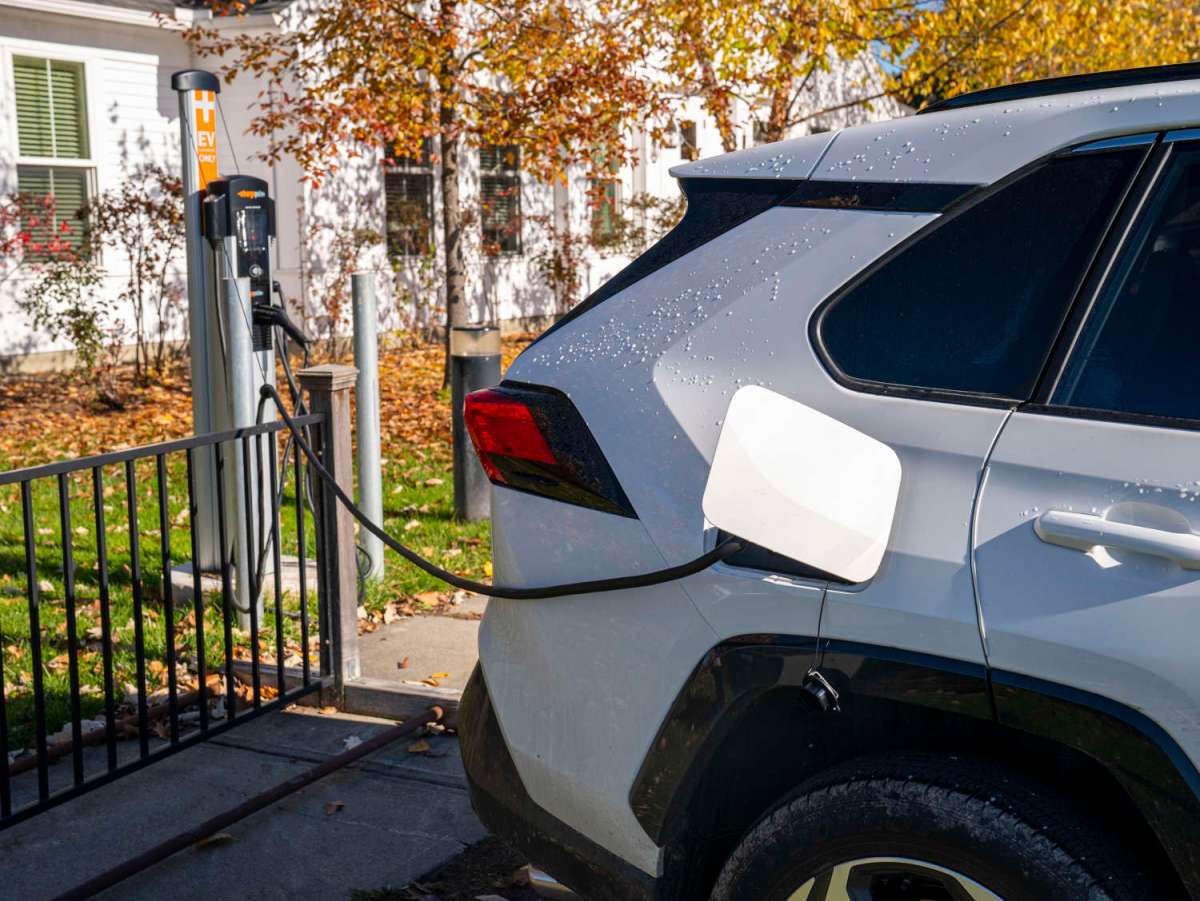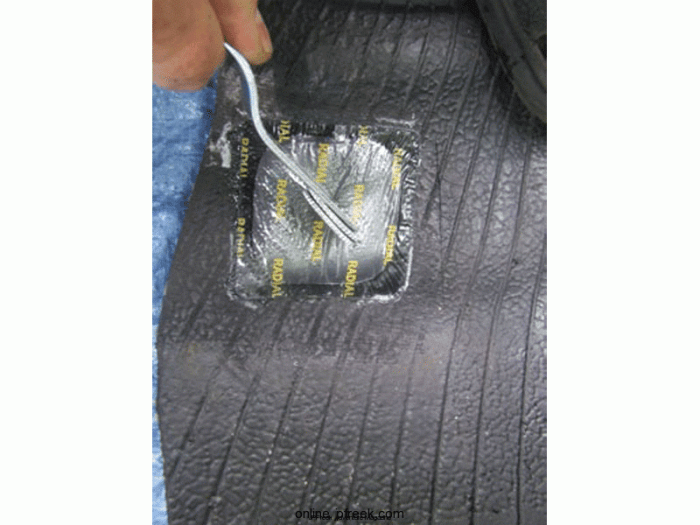Luxury car soundscapes (fake engine noise): Ever wondered why your luxury ride sounds so much more powerful than its engine specs suggest? It’s not magic, it’s engineering! This deep dive explores the fascinating world of artificial engine sounds in luxury vehicles, from their historical development to the ethical considerations surrounding their use. We’ll unpack the tech, the psychology, and the future of these meticulously crafted auditory experiences.
We’ll cover everything from the early days of rudimentary sound enhancement to the sophisticated algorithms and speaker systems used today to create immersive, brand-specific soundscapes. We’ll explore how these sounds affect our perception of performance, luxury, and even the car’s brand identity. Think of it as the soundtrack to your driving experience – expertly composed to enhance the feeling of power and prestige.
The History and Evolution of Fake Engine Noise in Luxury Cars: Luxury Car Soundscapes (fake Engine Noise)

The rise of electric vehicles and the increasing emphasis on fuel efficiency have presented a unique challenge for luxury car manufacturers: how to maintain the visceral thrill associated with powerful engine sounds in vehicles that are inherently quieter. The solution? Sophisticated systems that artificially generate and amplify engine sounds, creating a customized auditory experience tailored to the brand’s identity and the driver’s expectations.
This practice, sometimes met with controversy, has become increasingly prevalent in the luxury car market, evolving alongside technological advancements and shifting consumer preferences.The technological advancements that enabled the creation of artificial engine sounds are rooted in the digital signal processing (DSP) revolution. Early systems relied on simple sound reproduction, playing pre-recorded audio clips through speakers. However, modern systems utilize far more complex algorithms to analyze real-time data from the vehicle’s powertrain, creating dynamic soundscapes that accurately reflect the car’s performance.
This involves sophisticated microphones capturing actual engine sounds (in vehicles that still have combustion engines), which are then digitally manipulated and enhanced before being piped into the cabin through strategically placed speakers. Advancements in audio processing power, miniaturization of electronics, and the development of high-fidelity speaker systems have been crucial to the realistic and immersive quality of modern artificial engine sounds.
Consumer Preferences and Market Demands
The adoption of fake engine sounds is intrinsically linked to consumer expectations within the luxury car market. Luxury car buyers often associate powerful engine sounds with performance, prestige, and a sense of driving excitement. As electric and hybrid vehicles gained popularity, manufacturers recognized the need to address the potential loss of this sensory experience. Marketing research highlighted that many consumers were reluctant to sacrifice the auditory feedback associated with high-performance vehicles.
This market demand prompted manufacturers to invest heavily in developing technologies that could replicate and even enhance the sounds of combustion engines, effectively bridging the gap between traditional and electric powertrains. This strategy isn’t just about replicating sounds; it’s about creating a carefully crafted brand identity and enhancing the overall driving experience. For instance, some brands opt for a subtle, refined sound, while others embrace a more aggressive and powerful audio signature.
Approaches to Generating and Amplifying Sounds
Different luxury car brands employ varying approaches to generating and amplifying artificial engine sounds. Some utilize sophisticated algorithms that process real-time data from the vehicle’s powertrain, creating a dynamic soundscape that adapts to driving conditions. Others use pre-recorded soundscapes, carefully engineered to evoke a specific emotional response or brand identity. The placement and type of speakers also play a crucial role in delivering a realistic and immersive experience.
Some systems use speakers integrated into the headliner or dashboard, while others employ strategically placed speakers throughout the cabin to create a more three-dimensional soundscape. For example, some manufacturers focus on the low-frequency rumble associated with powerful engines, while others emphasize higher-frequency sounds that are perceived as more aggressive or sporty. The level of customization also varies; some systems allow drivers to adjust the volume and character of the artificial engine sound, while others provide a fixed soundscape.
Timeline of Key Milestones
Early systems (late 2000s – early 2010s): Basic sound reproduction using pre-recorded audio clips. Sound quality was often simplistic and lacked dynamic range.Refinement and sophistication (mid-2010s): Advancements in DSP allowed for more realistic and dynamic soundscapes, often incorporating real-time data from the powertrain. Sound quality improved significantly.Immersive and customized experiences (late 2010s – present): Integration of high-fidelity speaker systems, sophisticated algorithms, and customized sound profiles tailored to specific models and driving modes.
The focus shifted from mere sound reproduction to the creation of a carefully crafted auditory experience.
The Design and Implementation of Artificial Soundscapes
Crafting realistic and engaging fake engine sounds for luxury cars is a complex process requiring a blend of art and science. Sound engineers meticulously design these soundscapes to enhance the driving experience, aiming for a balance between authenticity and a desired emotional response. The process involves capturing real engine sounds, manipulating them digitally, and carefully integrating them into the car’s audio system.The process of creating these artificial soundscapes begins with extensive sound recording sessions.
High-quality microphones capture the sounds of real engines under various conditions – acceleration, deceleration, idling, and even specific gear changes. These recordings then undergo meticulous editing and processing using specialized software. This involves cleaning up unwanted noises, isolating specific frequencies, and manipulating the sound’s characteristics to create the desired effect.
Sound Design Techniques
Specific techniques are employed to fine-tune the sounds and make them both realistic and emotionally engaging. For example, engineers might boost the bass frequencies to create a more powerful and visceral feel, especially during acceleration. Conversely, they might attenuate certain high-frequency sounds to make the engine sound smoother and more refined. They also carefully manipulate the timing and intensity of various sound elements to mimic the behavior of a specific engine type, creating a unique sonic signature for each car model.
The goal is not to create a perfect replica of a real engine, but rather a carefully crafted auditory experience that aligns with the brand’s identity and the car’s performance characteristics. Think of it like a musical composition; the goal isn’t to record a real orchestra, but to craft a soundscape that evokes a particular mood or feeling.
For instance, a powerful sports car might feature a more aggressive and throaty sound, while a luxury sedan might emphasize a smooth and refined tone.
Speaker Placement and Sound System Integration
The effectiveness of the artificial soundscape hinges heavily on the car’s sound system. Strategic placement of speakers within the cabin is crucial for creating a realistic and immersive experience. Ideally, the speakers are positioned to simulate the sound emanating from the engine bay, ensuring that the sound’s spatial characteristics accurately reflect the location of the engine. High-quality speakers and amplifiers are necessary to reproduce the full frequency range of the engineered soundscape with clarity and accuracy.
So, fake engine noise in luxury cars – kinda weird, right? It’s all about that visceral experience, even if it’s manufactured. But with the upcoming advancements in EV technology, like those crazy long-range vehicles mentioned in this article, Luxury EVs with 500+ mile range 2025 , maybe we’ll see a shift. Will they need to fake the absence of noise?
It’ll be interesting to see how they handle the soundscape in these silent beasts.
Advanced sound processing techniques, such as head tracking and 3D audio, can further enhance the realism and immersion, making the soundscape seem to move and change dynamically with the car’s movements. Think of it as a sophisticated home theatre system adapted to the confines of a car cabin. The system must be able to deliver the nuances of the soundscape without distortion or unwanted artifacts.
Comparison of Sound Generation Methods
The following table compares different methods used to generate artificial engine sounds, considering factors like realism, cost, and complexity.
| Method | Realism | Cost | Complexity |
|---|---|---|---|
| Direct Engine Recording and Processing | High | High | High |
| Synthesized Sounds | Medium to High (depending on skill) | Medium | Medium |
| Sound Libraries and Modification | Medium | Low to Medium | Low to Medium |
| Combination of Methods | High | High | High |
The Psychological and Emotional Impact of Fake Engine Sounds

The carefully crafted sounds emanating from a luxury car’s speakers aren’t just random noise; they’re meticulously designed auditory experiences intended to deeply influence the driver’s perception of the vehicle and the driving experience itself. These artificial soundscapes play a significant role in shaping the emotional connection between the driver and the machine, subtly manipulating feelings of power, luxury, and overall satisfaction.Fake engine noise significantly impacts a driver’s perception of performance and luxury by creating a sensory experience that aligns with expectations associated with high-performance or luxurious vehicles.
The auditory feedback reinforces the visual and tactile sensations, creating a holistic experience that elevates the perceived value and driving enjoyment. A powerful, throaty engine sound, even if artificially generated, can make a car feel more responsive and potent, while a smoother, quieter sound contributes to a sense of refinement and effortless power.
Influence on Performance Perception
The type of artificial engine sound directly impacts how drivers perceive the car’s performance. A deep, resonant growl associated with a powerful V8 engine, even if synthesized, can create a sense of acceleration and speed that might not be fully reflected in the car’s actual performance figures. Conversely, a subtle, refined hum suggests a smooth, efficient, and luxurious driving experience, potentially enhancing the perception of high-quality engineering and craftsmanship.
This manipulation of auditory perception can significantly impact the driver’s overall satisfaction and feeling of control. For instance, a smaller engine car equipped with a synthesized V8 sound might feel more powerful than its actual specifications suggest.
Emotional Responses to Different Sounds
Sporty artificial engine sounds, often characterized by aggressive growls, pops, and crackles, trigger excitement and a sense of exhilaration. These sounds tap into primal instincts associated with speed and power, making the driving experience more engaging and emotionally stimulating. In contrast, refined artificial engine sounds, typically smooth and quiet, evoke feelings of calm, sophistication, and effortless luxury. These sounds appeal to a different segment of drivers who value comfort, quietude, and a sense of refined elegance.
Think of the difference between the auditory experience in a high-performance sports car versus a luxurious sedan. The former aims for a visceral, thrilling experience, while the latter prioritizes smoothness and tranquility.
Manipulating Sounds for Enhanced Driving Experience and Brand Identity
Automakers are increasingly leveraging the power of artificial soundscapes to create unique brand identities and enhance the overall driving experience. By carefully crafting the sounds, they can tailor the auditory experience to match the specific character and personality of each vehicle model. For example, a luxury SUV might feature a refined, understated sound, while a sports coupe might boast a more aggressive and exhilarating soundscape.
This allows manufacturers to not only differentiate their products but also to create a stronger emotional connection with their target audience. The sound becomes an integral part of the brand’s story and its promise to the customer.
Potential Negative Consequences of Artificial Sounds
While the benefits of artificial engine sounds are undeniable, there are potential drawbacks. One significant concern is the risk of misleading consumers about a vehicle’s actual performance. A car that sounds powerful might not necessarily be as potent as it sounds, leading to buyer dissatisfaction. This potential for deception raises ethical questions about transparency and honesty in automotive marketing.
Moreover, the overuse or poorly implemented artificial sounds could lead to driver fatigue or even a disconnect between the auditory and actual driving experience, diminishing the overall driving satisfaction.
The Legal and Ethical Considerations of Fake Engine Noise

The rise of artificial engine sounds in luxury cars presents a complex interplay of legal, ethical, and societal concerns. While manufacturers aim to enhance the driving experience and brand image, questions arise regarding transparency, consumer deception, and environmental responsibility. This section explores the existing regulatory landscape, ethical implications, and differing stakeholder perspectives on the use of synthesized engine sounds.
Existing Regulations and Standards
Currently, there’s no single, globally unified set of regulations specifically addressing artificial engine sounds in luxury vehicles. However, several countries and regions have regulations indirectly impacting this practice. For example, noise emission standards, primarily focused on reducing real-world noise pollution, exist in many places. These regulations, however, don’t directly address the addition of artificial sounds. Furthermore, regulations concerning advertising and consumer protection could indirectly apply if the artificial sounds are deemed misleading or deceptive in promotional materials.
The legal landscape is still evolving, and future regulations might directly address the use of synthesized sounds in vehicles. For example, the EU is increasingly focused on transparency and could potentially mandate disclosure of artificial sound enhancements in vehicle specifications.
Ethical Implications of Enhancing Perceived Performance, Luxury car soundscapes (fake engine noise)
The ethical implications center around the potential for deception. Using artificial sounds to exaggerate a vehicle’s performance creates a dissonance between the auditory experience and the actual mechanical capabilities. This could be seen as misleading consumers, especially those unfamiliar with the technology. It raises questions about the authenticity of the brand image and the integrity of the marketing message.
A key ethical concern revolves around informed consent: should consumers be explicitly informed about the presence of artificial sounds, and should they have the option to disable them? The lack of transparency could be considered a form of manipulative marketing.
Stakeholder Perspectives on Fake Engine Sounds
Consumers hold diverse views. Some appreciate the enhanced driving experience, viewing the sounds as a desirable feature contributing to the overall luxury feel. Others find it disingenuous and prefer the authenticity of real engine sounds. Manufacturers generally view artificial sounds as a tool to improve the brand experience and potentially differentiate their vehicles in the market. Environmental groups often express concerns that these sounds might counteract efforts to reduce noise pollution and mask the quieter operation of more fuel-efficient vehicles.
So, you’re into that whole fake engine noise thing in luxury cars – the soundscapes, right? It’s kinda ironic, paying a fortune for a car that needs artificially enhanced sounds. But if you’re gonna do it, you might as well save some cash on registration fees by checking out the Cheapest states to register a luxury car.
That way, you can put more of your money towards those sweet, synthesized engine roars. It’s all about priorities, you know?
They might argue that resources are better invested in developing genuinely quiet and efficient engines rather than enhancing the perceived performance through artificial means.
A Hypothetical Legal Framework for Regulation
A comprehensive legal framework should prioritize transparency and consumer protection. It could mandate clear labeling of vehicles using artificial engine sounds, both in marketing materials and within the vehicle itself (perhaps through a menu option). This would allow consumers to make informed purchasing decisions. The framework should also establish standards for the type and volume of artificial sounds, preventing the creation of excessively loud or misleading soundscapes.
Finally, it could create a mechanism for consumer redress in cases where artificial sounds are deemed deceptive or misleading, possibly through a consumer protection agency or regulatory body. This framework would need to be adaptable to technological advancements and evolving consumer expectations.
Future Trends and Innovations in Artificial Soundscapes
The future of artificial engine sounds in luxury cars is poised for significant advancement, moving beyond simple recreations of combustion engine noises to become deeply integrated and personalized auditory experiences. We can expect to see a convergence of sophisticated sound design, advanced audio technology, and intelligent vehicle systems. This will lead to soundscapes that are not only realistic but also adaptive and emotionally resonant.The next generation of artificial soundscapes will leverage advancements in several key areas.
Higher fidelity audio systems, capable of producing a wider range of frequencies and dynamic levels, will allow for a more nuanced and immersive soundscape. Imagine a system that not only replicates the roar of a V8 engine but also subtly adjusts the sounds based on the driving mode, road conditions, and even the driver’s emotional state.
Advancements in Sound Technology
Realism and customization will be greatly enhanced through the use of more sophisticated algorithms and machine learning. These algorithms can analyze real-world engine sounds with greater precision, creating more authentic and detailed digital replicas. Furthermore, machine learning will allow for personalized sound profiles, enabling drivers to tailor their soundscapes to their individual preferences. Think of a system that learns your driving style and adjusts the sounds accordingly, creating a uniquely tailored auditory experience.
For example, a driver who prefers a sportier sound profile might experience a more aggressive engine note during acceleration, while a driver who prioritizes comfort might experience a smoother, quieter soundscape. This personalized approach will allow manufacturers to cater to a wider range of driver preferences and further enhance the luxury experience.
Integration with Driver-Assistance Systems
The integration of artificial sounds with driver-assistance systems presents exciting possibilities. For instance, the soundscape could provide subtle auditory cues to alert the driver to potential hazards, such as an approaching vehicle in a blind spot or an upcoming lane change. These auditory cues could be integrated seamlessly into the overall soundscape, enhancing situational awareness without being intrusive or jarring.
Imagine a system that subtly increases the intensity of the engine sound to warn the driver of an impending obstacle, providing a unique form of haptic feedback through sound.
Future Applications Beyond Luxury Cars
The technology underlying artificial soundscapes has far-reaching potential beyond the luxury car market.
- Electric Vehicles (EVs): Providing customized driving sounds for EVs to improve pedestrian safety and driver experience.
- Gaming and Virtual Reality (VR): Creating more immersive and realistic sound environments for gaming and VR applications.
- Film and Television: Producing high-fidelity sound effects for movies and television shows.
- Architectural Acoustics: Designing soundscapes for buildings and public spaces to enhance the ambiance and user experience.
- Accessibility Technologies: Developing auditory cues for visually impaired individuals to navigate their environment.
The development of more sophisticated artificial soundscapes represents a significant leap forward in automotive technology, promising a more engaging and personalized driving experience. The future holds the potential for truly immersive and adaptive soundscapes that go beyond mere simulation, becoming an integral part of the overall driving experience.
Conclusive Thoughts
So, the next time you’re cruising in a luxury car and enjoying that throaty engine roar, remember it’s likely a carefully crafted soundscape. From the technological advancements that make it possible to the ethical debates surrounding its use, the world of fake engine noise is a complex and fascinating blend of engineering, psychology, and marketing. The future holds even more innovative possibilities, promising even more immersive and personalized driving experiences.
Buckle up, because the ride is just getting started.









